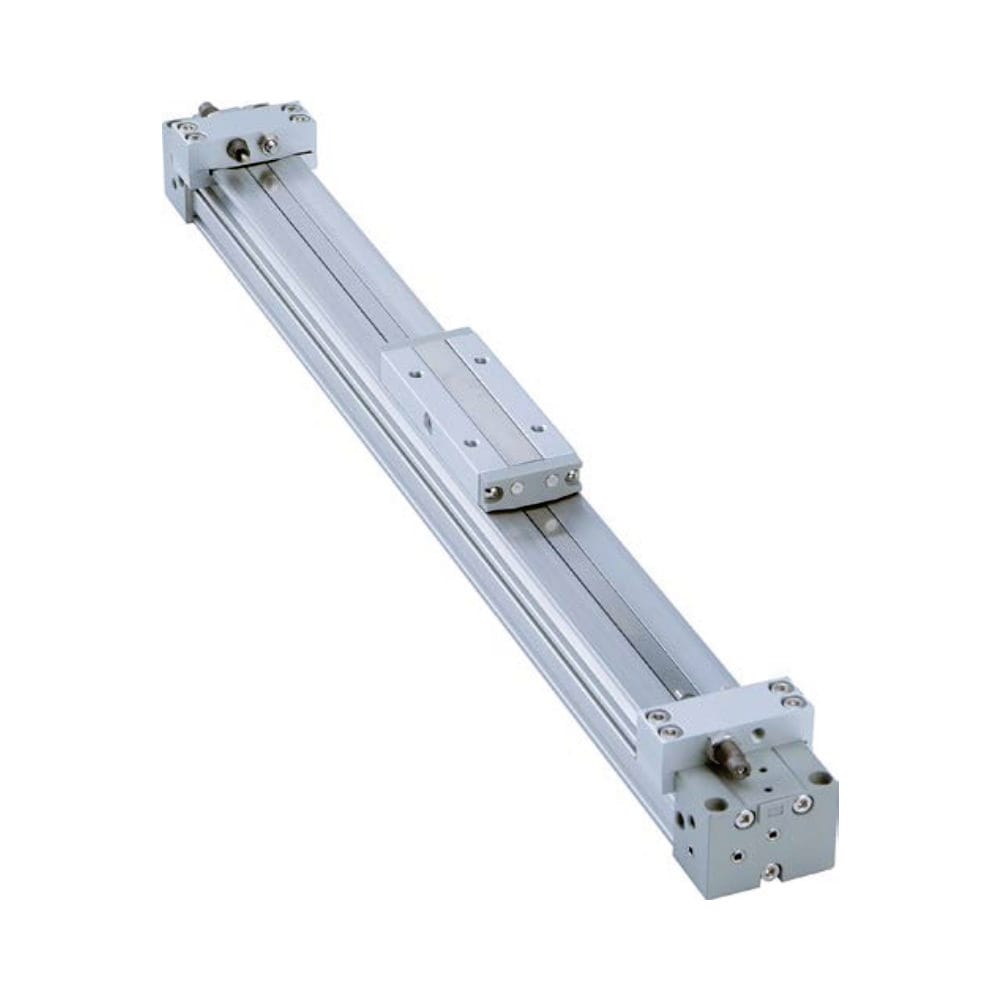Your pneumatic system is consuming excessive compressed air, cylinders are failing prematurely, and production efficiency is declining. The root cause often lies in improper pressure-to-load analysis, leading to oversized compressors and undersized cylinders. Accurate load analysis can slash your operating costs by up to 40%. 💰
Prawidłowa analiza ciśnienia i obciążenia siłownika pneumatycznego obejmuje obliczenie teoretycznego zapotrzebowania na siłę, uwzględnienie strat wydajności, dodanie współczynników bezpieczeństwa i wybór optymalnego ciśnienia roboczego w celu maksymalizacji wydajności przy jednoczesnym zminimalizowaniu zużycia energii.
Last week, I consulted with Jennifer, a plant engineer at a Texas food processing facility, whose pneumatic costs had doubled over two years due to incorrect pressure-load calculations that were literally bleeding money through inefficient system design.
Spis treści
- How Do You Calculate Required Cylinder Pressure for Specific Loads?
- What Factors Affect Pneumatic Cylinder Efficiency Under Load?
- How Does Load Type Impact Pressure Requirements?
- When Should You Upgrade to Higher Pressure Systems?
How Do You Calculate Required Cylinder Pressure for Specific Loads?
Accurate pressure calculations form the foundation of efficient pneumatic design. 🔧
The basic formula is Pressure = Load ÷ (Cylinder Area × Efficiency Factor), but real-world applications require additional considerations for friction, acceleration, safety margins, and system losses.
Kalkulator teoretycznej siły cylindra
Oblicz teoretyczną siłę pchania i ciągnięcia cylindra
Parametry wejściowe
Siła teoretyczna
Proces obliczania krok po kroku
Basic Force Requirements
At Bepto, we use this proven methodology:
- Theoretical Force: F = P × A (Pressure × Area)1
- Actual Force: F_actual = F_theoretical × Efficiency
- Required Pressure: P = F_required ÷ (A × Efficiency)
Efficiency Factors by Cylinder Type
| Typ cylindra | Typowa wydajność | Bepto Advantage |
|---|---|---|
| Standard Rod | 85-90% | 92-95% with premium seals |
| Bez pręta | 80-85% | 88-92% optimized design |
| Wytrzymałość | 90-95% | 95-98% precision manufacturing |
Zastosowanie w świecie rzeczywistym
Jennifer’s facility was using 150 PSI across all applications, but our analysis revealed:
- Light positioning: Only needed 60 PSI
- Medium clamping: Required 100 PSI
- Podnoszenie ciężarów: Actually needed 180 PSI
Przykład obliczeń
For a 4-inch bore cylinder lifting 2,000 lbs:
- Cylinder area: 12.57 sq inches
- Efficiency factor: 0.90
- Required pressure: 2,000 ÷ (12.57 × 0.90) = 177 PSI
- Recommended operating: 200 PSI (safety margin)
What Factors Affect Pneumatic Cylinder Efficiency Under Load?
Multiple variables impact how efficiently your cylinders convert pressure into useful work. ⚡
Key efficiency factors include seal friction, internal leakage, mounting alignment, operating temperature, air quality, and load characteristics, with properly maintained systems achieving 90-95% efficiency.

Primary Efficiency Killers
Seal-Related Losses
- Friction drag2: 5-15% efficiency loss
- Wyciek wewnętrzny: 2-8% pressure loss
- Wpływ temperatury: ±10% variation
Kwestie związane z projektowaniem systemu
- Niewspółosiowość3: Up to 20% efficiency loss
- Undersized supply lines: 10-25% pressure drop
- Poor air quality: 5-15% performance degradation
Strategie optymalizacji wydajności
When we upgraded Jennifer’s system, we focused on:
Immediate Improvements
- Uszczelki premium: Reduced friction by 40%
- Właściwy dobór rozmiaru: Eliminated pressure drops
- Alignment correction: Improved efficiency by 15%
Rozwiązania długoterminowe
- Konserwacja zapobiegawcza: Scheduled seal replacement
- Oczyszczanie powietrza: Filtration and lubrication systems
- Regulacja ciśnienia: Zone-specific pressure control
The result was a 35% reduction in compressed air consumption while improving cycle times by 20%.
How Does Load Type Impact Pressure Requirements?
Different load characteristics demand varying pressure strategies for optimal performance. 📊
Obciążenia statyczne4 require steady pressure maintenance, dynamic loads need pressure for acceleration, intermittent loads benefit from pressure regulation, and variable loads demand adaptive pressure control systems.
Load Classification and Pressure Impact
Static Load Applications
- Operacje zaciskania: Constant pressure required
- Positioning systems: Moderate pressure, high precision
- Wymagania dotyczące ciśnienia: Base calculation + 20% safety
Dynamic Load Applications
- Obsługa materiałów: High acceleration forces
- Szybkie pozycjonowanie: Quick response needed
- Wymagania dotyczące ciśnienia: Base + acceleration + 30% safety
Pressure vs Load Relationship Chart
| Typ obciążenia | Pressure Multiplier | Typowe zastosowania | Rekomendacja Bepto |
|---|---|---|---|
| Trzymanie statyczne | 1.2x theoretical | Clamps, brakes | Standardowy bezrdzeniowy |
| Dynamic lifting | 1.5x theoretical | Hoists, elevators | Heavy-duty rodless |
| Szybka jazda na rowerze | 1.8x theoretical | Pick & place | High-speed rodless |
| Zmienne obciążenia | 2.0x theoretical | Multi-function | Servo-controlled |
Wyniki studium przypadku
After implementing load-specific pressure zones, Jennifer’s facility achieved:
- Oszczędność energii: 42% reduction in compressor runtime
- Poprawa wydajności: 28% faster cycle times
- Redukcja kosztów utrzymania: 55% fewer cylinder repairs
- Oszczędność kosztów: $180,000 annually in operating expenses
When Should You Upgrade to Higher Pressure Systems?
Higher pressure systems offer advantages but require careful cost-benefit analysis. 🎯
Upgrade to higher pressure (150+ PSI) when you need compact cylinders, have space constraints, require rapid acceleration, or when energy costs justify the efficiency gains from smaller components.
High Pressure System Benefits
Zalety wydajności
- Kompaktowa konstrukcja: 40-60% smaller cylinders
- Szybsza reakcja: Reduced acceleration time
- Higher power density5: More force per unit size
Rozważania ekonomiczne
- Koszt początkowy: 20-30% higher equipment cost
- Operating efficiency: 15-25% better energy utilization
- Konserwacja: Potentially higher due to increased stress
Upgrade Decision Matrix
Consider upgrading when:
Ograniczenia przestrzenne
- Limited mounting space
- Weight restrictions
- Aesthetic requirements
Wymagania dotyczące wydajności
- High-speed operation needed
- Precise positioning required
- Rapid cycle times essential
Uzasadnienie ekonomiczne
Our analysis for Jennifer showed:
- Equipment cost increase: $45,000
- Annual energy savings: $72,000
- Payback period: 7.5 months
- 10-year NPV: $580,000 positive
Bepto High-Pressure Solutions
Our rodless cylinders excel in high-pressure applications:
- Ciśnienie znamionowe: Up to 250 PSI standard
- Kompaktowa konstrukcja: 50% oszczędność miejsca
- Niezawodność: Extended life under high pressure
- Cost advantage: 30% less than OEM alternatives
Robert, a machine builder in Ohio, switched to our high-pressure rodless cylinders and reduced his machine footprint by 35% while improving performance, allowing him to win contracts he couldn’t bid on before.
Wnioski
Proper pneumatic cylinder pressure vs load analysis is essential for system efficiency, cost control, and reliable operation in modern industrial applications. 💪
FAQs About Pneumatic Cylinder Pressure vs Load Analysis
Q: What’s the most common mistake in pressure-load calculations?
Ignoring efficiency factors and safety margins, leading to undersized systems that struggle under real-world conditions and consume excessive energy trying to compensate.
Q: How often should I recalculate pressure requirements?
Review calculations annually or whenever loads change, as wear and system modifications can significantly impact actual pressure needs over time.
Q: Can I use the same pressure for all cylinders in my system?
No – different applications require different pressures. Zone-specific pressure regulation can reduce energy consumption by 30-50% compared to single-pressure systems.
Q: What pressure range is most efficient for pneumatic systems?
Most industrial applications operate efficiently between 80-120 PSI, with higher pressures justified only for specific performance or space requirements.
Q: How quickly can Bepto help optimize my pressure-load analysis?
We provide free system analysis within 48 hours and can ship optimized cylinder solutions within 24 hours, with most global deliveries completed in 2-3 business days.
-
See a technical breakdown of the fundamental force, pressure, and area (F=PA) formula. ↩
-
Explore how seal friction creates efficiency losses and affects cylinder performance. ↩
-
Learn how pneumatic cylinder misalignment can cause binding, wear, and significant efficiency loss. ↩
-
Understand the critical engineering differences between static and dynamic loads. ↩
-
Get a clear definition of power density and why it is a key metric in system design. ↩





